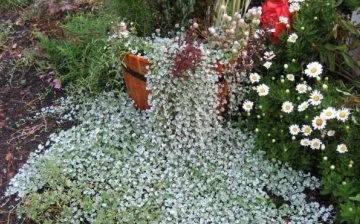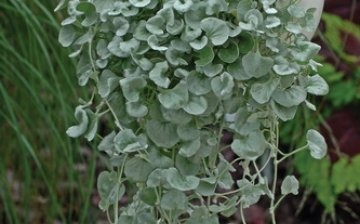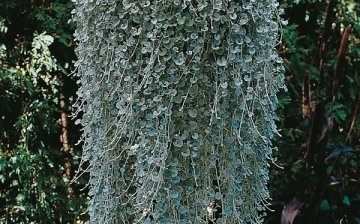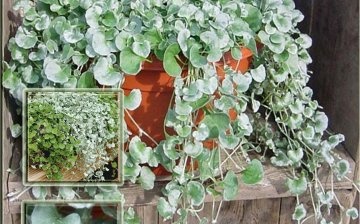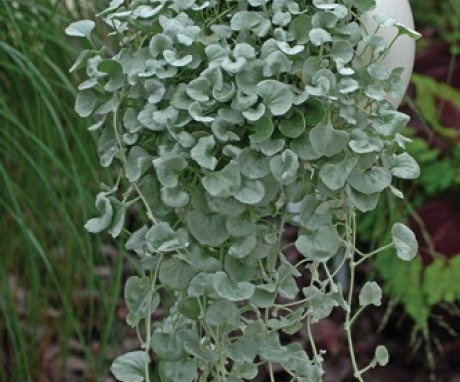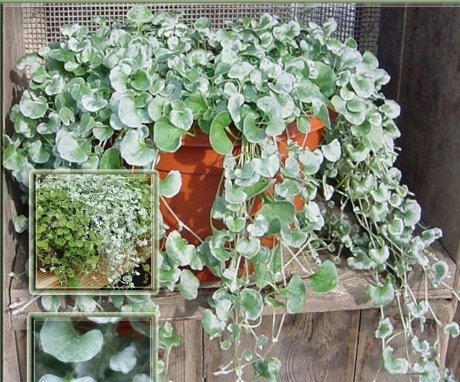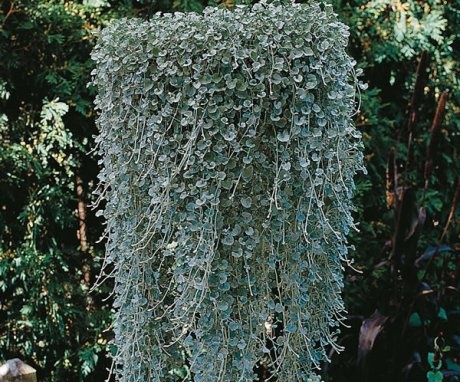Growing dichondra
Any house will always look much more comfortable and beautiful if it is decorated not with plastic finishing materials, but with natural decor elements, for example, dichondra. It looks like a green soft carpet. Green color not only has a beneficial effect on the state of the organs of vision, but also gives the room a magnificent fresh look.
Content:
Well, aromas and additional oxygen in the house will never hurt. To get real benefit from it, let's first try to put some energy into it and grow this beautiful plant correctly.
Features of growing dichondra
Dichondra is native to the tropics of America and East Asia, where it grows as a perennial ground cover or ampelous plant. It cannot stand winter in the middle lane, and therefore it is cultivated as an annual. The most common are two of its types, called "emerald waterfall" and "silver waterfall" according to the color of the leaves.
It makes no sense to grow it and frame the room with it in the hope of a bright bloom. Tiny, almost imperceptible dull flowers appear from time to time during the summer. Dichondra is cultivated precisely because of the aesthetic purpose of its leaves.
Both types of dichondra are a gentle stream of leaves that can perfectly decorate any interior and give it a special flavor. However, the plant is quite capricious, and when growing each species, its needs must be taken into account.
For the "emerald waterfall" you need a sunny place, and the "silver waterfall" can grow in the shade. Growing dichondra from seeds is somewhat more difficult than reproducing it cuttings... Seeds are sown at the end of February in seedling boxes, slightly sprinkled with earth. The box is covered with glass or placed in a plastic bag, creating a mini greenhouse.
Place this greenhouse in a warm place and moisten by spraying from a spray bottle as the earth dries up. Seedlings will appear in two weeks. After the seedlings appear, glass or polyethylene can be removed, and the temperature of the content can be lowered.
Have at least a few weak first leaves? All protection must be removed gradually. But after the first results are noticeable, you need to start planting the sprouts from each other. Do not forget that sufficient space is required for good growth of the shoots: initially, the diameter of the new place should be no more than 10 cm.
Older plants are sensitive to watering: despite the fact that dried soil quickly rehabilitates after moistening, such situations should not be allowed.
You can transplant to a permanent place after 5-6 weeks. By the middle of summer, it will grow long, thin shoots that resemble a waterfall. To give the desired shape, the plant is pruned. The cuttings can be rooted in a mini greenhouse and a new plant can be planted.
In winter, the "waterfall" dies, so many gardeners, in order not to bother with seeds next year, bring it into the house, winter garden, veranda for the winter, and cut it off in the spring. And from early spring they decorate the garden with it.
Most often, dichondra cultivation is used for vertical gardening. 3-4 adult plants are planted in a pots with a capacity of 1 liter. Dichondra looks beautiful in combination with petunias, lobelia and other bright colors.
Propagation of dichondra by cuttings
As it turned out, growing dichondra using seeds will take some effort and a lot of time. However, there is another way to breed this beautiful plant - with the help of cuttings. This type of reproduction is faster and easier, since the dichondra quickly takes root and begins to grow in a very short time. But why is the seed method so often preferred?
- As it is already clear from the name, cuttings will require actual cuttings to grow. And if the gardener gets acquainted with this plant for the first time, then it will be difficult for him to get them.
- With this method, the cuttings are planted each in a separate pot, and it is better to do this in the spring. And since the plant is thermophilic, for the first time the pot should remain indoors. And for some gardeners it is difficult to arrange.
In general, this process is quite simple and unsophisticated. The stems are cut from the plant (this is also necessary so that the dichondra does not grow and spoil the entire resulting appearance) and are planted one at a time. After a while, they can be transplanted into pots and taken out into the open air. The best way to cut the stems is in the spring.
Freshly cut shoots can be started to be planted in the fall, but then the plant will have to be warm throughout the winter period. But here it will take some effort, because the rapidly growing dichondra will have to be transplanted often.
With the right attitude, care and attention, even the most unsightly house or room can be turned into a cozy one. gazebo or a rest room. One has only to try a little, and nature will repay it with beauty.



